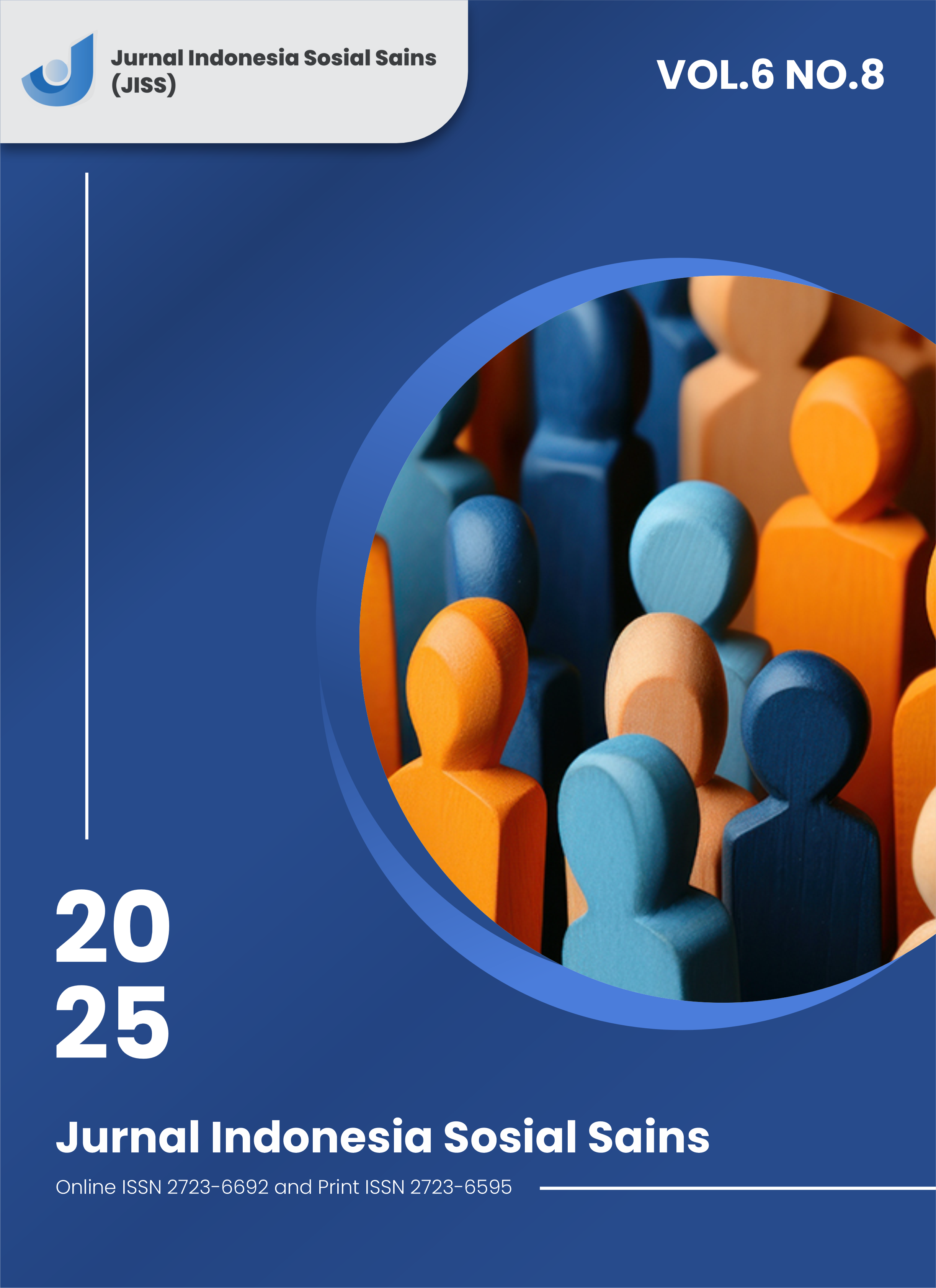Effects of Papaya (Carica Papaya) Leaf Extract on Collagen Synthesis Enhancement in Various Experimental Studies: Molecular and Histological Review
DOI:
https://doi.org/10.59141/jiss.v6i8.1837Keywords:
papaya leaf extract, collagen, anti-aging, MMP, TGF-βAbstract
Collagen synthesis plays an important role in tissue regeneration and the skin aging process. This process can be disrupted by oxidative stress as well as increased expression of matrix metalloproteinases (MMPs). Papaya (Carica papaya L.) leaf extract contains bioactive compounds such as quercetin, vitamin C, and papain, which have the potential to stimulate collagen synthesis. The aim of this review was to analyze experimental evidence related to the effects of papaya leaf extract on collagen synthesis through molecular and histological approaches. Literature searches were conducted through PubMed, Google Scholar, and MDPI databases using the keywords “papaya leaf extract,” Carica papaya, “collagen,” and “photoaging.” Five articles that met the inclusion criteria were analyzed. Papaya leaf extract has been shown to lower ROS levels, suppress MMP expression, and activate the TGF-β pathway. Histological results demonstrated increased expression of type I collagen and accelerated wound healing in animal models. The potential of papaya leaf extract as a topical anti-aging agent and regenerative therapy is considered promising. However, further research is needed to determine the optimal dose and evaluate long-term safety.
References
Amirsasan, R., Dolgari, R., & Vakili, J. (2019). Effects of Pilates Training and Turmeric Supplementation on Sirtuin 1 Level and Body Composition in Postmenopausal Females with Sedentary Overweight: A Randomized, Double-Blind, Clinical Trial. Zahedan Journal of Research in Medical Sciences, 21(3), 1–8. https://doi.org/10.5812/zjrms.81620
Bar, V. S. (2025). Skin aging and type I collagen: A systematic review of interventions with potential collagen-related effects. Cosmetics, 12(4), 129.
Djunaidi, F., Mardiyan, K. E., & Widjiati, W. (2015). Pemberian topikal ekstrak daun pepaya (Carica papaya) pada hewan coba mencit (Mus musculus) bunting meningkatkan kepadatan kolagen jaringan vagina. Majalah Obstetri & Ginekologi, 23(3), 118.
Figueiredo, A. F., Santanna, L. P., & Bóbbo, V. C. (2017). Evaluating the effect of 3% papain gel application in cutaneous wound healing in mice. Wounds, 29(4), 96-101.
Ghahremani-Nasab, M., Bakhshayesh, A. R., & Akbari-Gharalari, N. (2023). Biomolecular and cellular effects in skin wound healing: The association between ascorbic acid and hypoxia-induced factor. Journal of Biological Engineering, 17(1), 62.
Hadi, T. H. S., Hardianto, G., & Kurniawati, E. M. (2024). The effects of quercetin on the expression of collagen I, collagen III and elastin in vaginal: An experimental animal study. Clinical and Experimental Obstetrics & Gynecology, 51(10).
Kong, Y. R., Jong, Y. X., & Balakrishnan, M. (2021). Beneficial role of Carica papaya extracts and phytochemicals on oxidative stress and related diseases: A mini review. Biology, 10(4).
Liu, H. M., Cheng, M. Y., & Xun, M. H. (2023). Possible mechanisms of oxidative stress-induced skin cellular senescence, inflammation, and cancer and the therapeutic potential of plant polyphenols. International Journal of Molecular Sciences, 24(4), 3755.
Marlinawati, I. T., Nurhidayah, S., & Santoso, S. (2022). Effect of papaya leaf extract gel (Carica papaya) on incision wound healing in Rattus norvegicus. Medical Laboratory Technology Journal, 1-10.
Plikus, M. V., Wang, X., & Sinha, S. (2021). Fibroblasts: Origins, definitions, and functions in health and disease. Cell, 184(15), 3852-3872.
Pullar, J. M., Carr, A. C., & Vissers, M. C. M. (2017). The roles of vitamin C in skin health. Nutrients, 9(8).
Ryan, A. S., & Li, G. (2023). Sex differences in muscle SIRT1 and SIRT3 and exercise + weight loss effects on muscle sirtuins. Experimental Biology and Medicine, 248(4), 302–308. https://doi.org/10.1177/15353702221142619
Seo, S. A., Ngo, H. T. T., Hwang, E., & Park, B. (2020). Protective effects of Carica papaya leaf against skin photodamage by blocking production of matrix metalloproteinases and collagen degradation in UVB-irradiated normal human dermal fibroblasts. South African Journal of Botany, 131, 398-405.
Shin, J. W., Kwon, S. H., & Choi, J. Y. (2019). Molecular mechanisms of dermal aging and antiaging approaches. International Journal of Molecular Sciences, 20(9), 2126.
Sorongan, R. S., Pangemanan, D. H. C., & Siagian, K. V. (2015). Efektivitas perasan daun pepaya terhadap aktivitas fibroblas pasca pencabutan gigi pada tikus wistar jantan. Ilmiah Farmasi, 4(4), 52-57.
Wang, H. (2021). A review of the effects of collagen treatment in clinical studies. Polymers, 13(22), 3868.
Wijaya, D. P., Herlina, & Fitri, N. A. (2020). Preparation, characterization, and wound healing activity of papaya leaves extract on spray gel. Majalah Obat Tradisional, 25(2), 105-109.
Wihastyoko, H. Y. L., Soeharto, S., & Widjajanto, E. (2022). Effect of papain enzyme administration in pH alteration, VEGF phosphorylation, and its impact on collagen degradation using a rat model of abnormal scarring. Tropical Journal of Pharmaceutical Research, 20(5), 1017-1022.
Downloads
Published
How to Cite
Issue
Section
License
Copyright (c) 2025 Andre Kristanto, Bagus Komang Satriyasa, I Gusti Ayu Artini

This work is licensed under a Creative Commons Attribution-ShareAlike 4.0 International License.
Authors who publish with this journal agree to the following terms:
- Authors retain copyright and grant the journal right of first publication with the work simultaneously licensed under a Creative Commons Attribution-ShareAlike 4.0 International. that allows others to share the work with an acknowledgement of the work's authorship and initial publication in this journal.
- Authors are able to enter into separate, additional contractual arrangements for the non-exclusive distribution of the journal's published version of the work (e.g., post it to an institutional repository or publish it in a book), with an acknowledgement of its initial publication in this journal.
- Authors are permitted and encouraged to post their work online (e.g., in institutional repositories or on their website) prior to and during the submission process, as it can lead to productive exchanges, as well as earlier and greater citation of published work.












